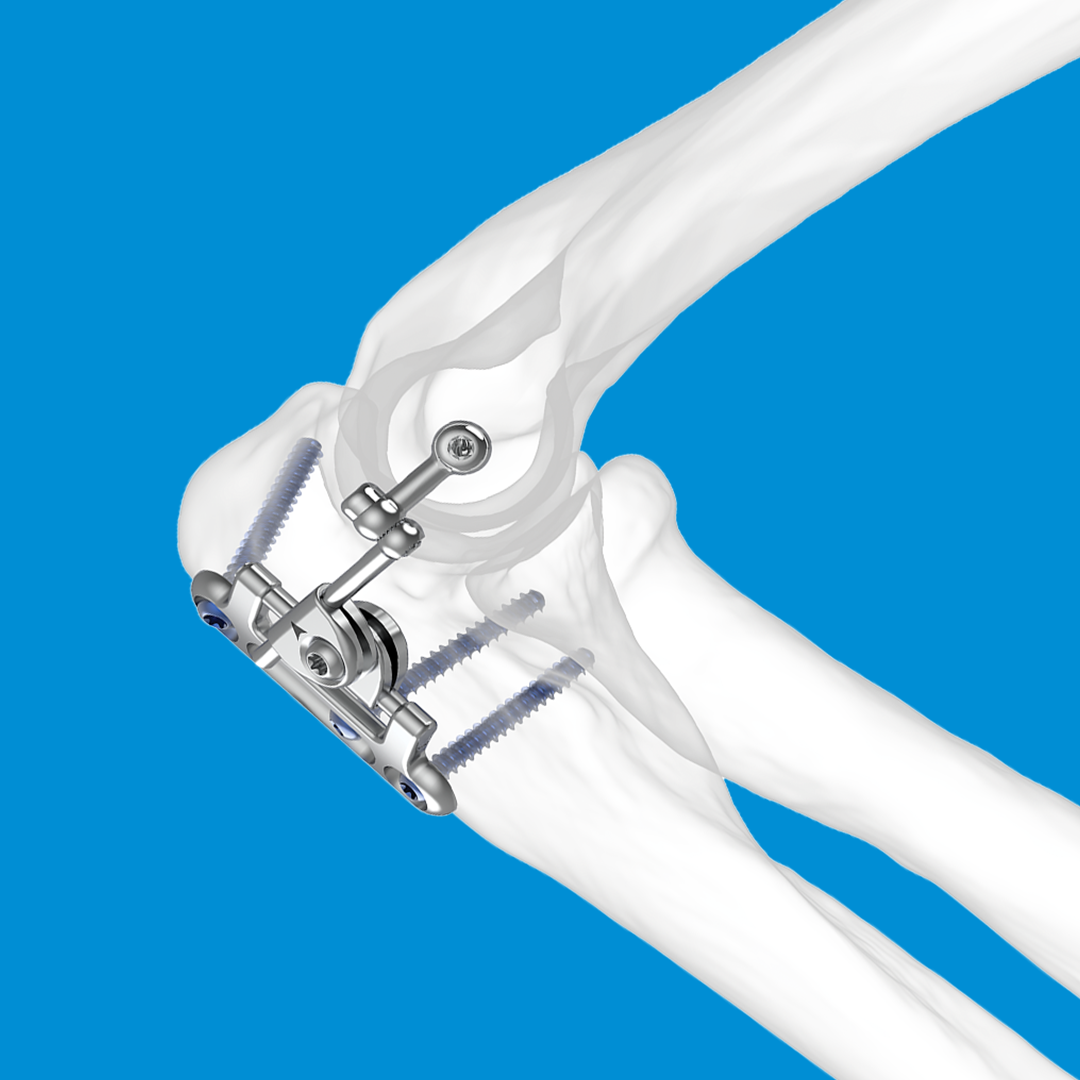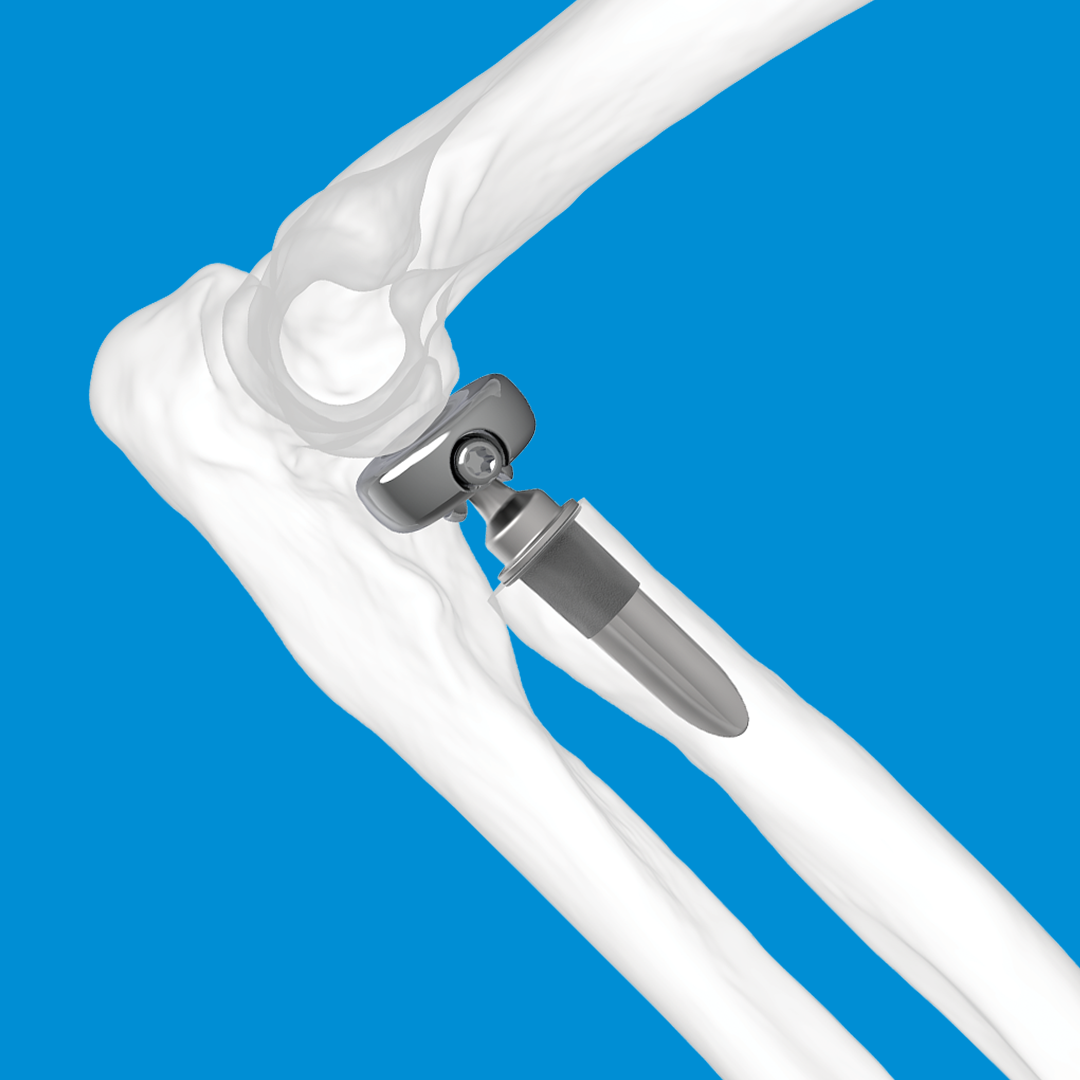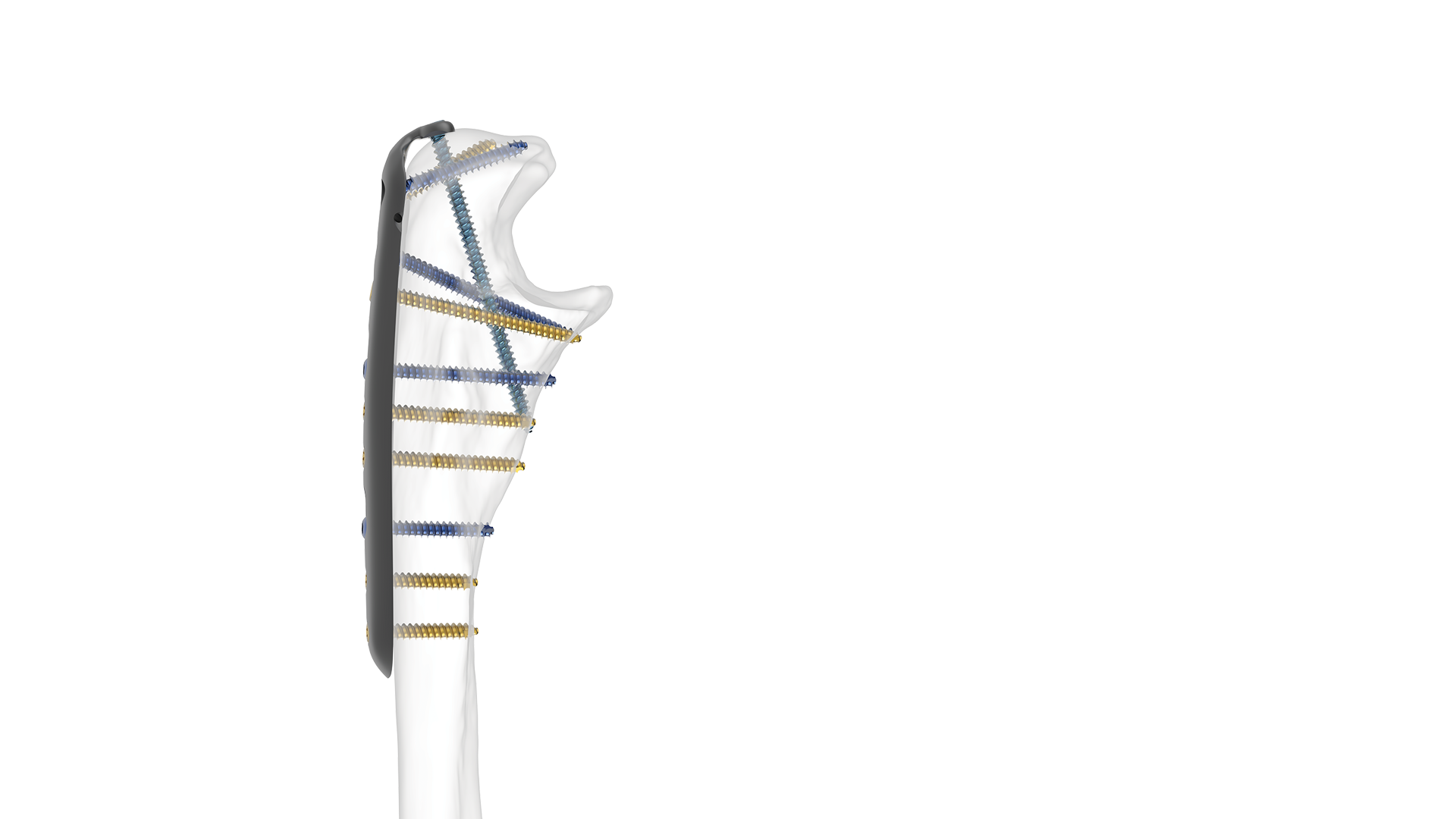
Proximal Ulna Plate
Features
- Specialised instrumentation
- Deepened Central Concavity
- Single Home Run Tabs
Proximal Ulna Plate
The Proximal Ulna Plate is designed to fix proximal olecranon fractures effectively. It also helps prevent the avulsion of the triceps insertion. The Proximal Ulna Plating System contains the following:
- CoCr cannulated polyaxial locking screws (3.0mm diameter)
- Titanium alloy Proximal Ulna Plates (73mm, 108mm, 151mm, left and right)
- K-wires for taking measurements
Instrumentation the Proximal Ulna Plate system is designed for fracture fusion, fixation, osteotomies, and instances of non-union between the radius and ulna. Screws are available in both locking and non-locking configurations to aid plate fixation.
Skeletal Dynamics Distal Elbow Set
LEDA offers a range of systems for patients experiencing upper extremity trauma in the form of the Skeletal Dynamics Distal Elbow Set. The distal elbow set consists of the following systems:
- Distal Elbow Plating System: Proximal Ulna Plating and PROTEAN Elbow Plating Systems
- REDUCT Headless Compression Screw System
- ALIGN Radial Head System
- Internal Joint Stabilizer – Elbow System
INTERESTED IN PROXIMAL ULNA PLATE?
If you would like more information regarding Skeletal Dynamics’ Proximal Ulna Plate.
Interested in the Proximal Ulna Plate ?
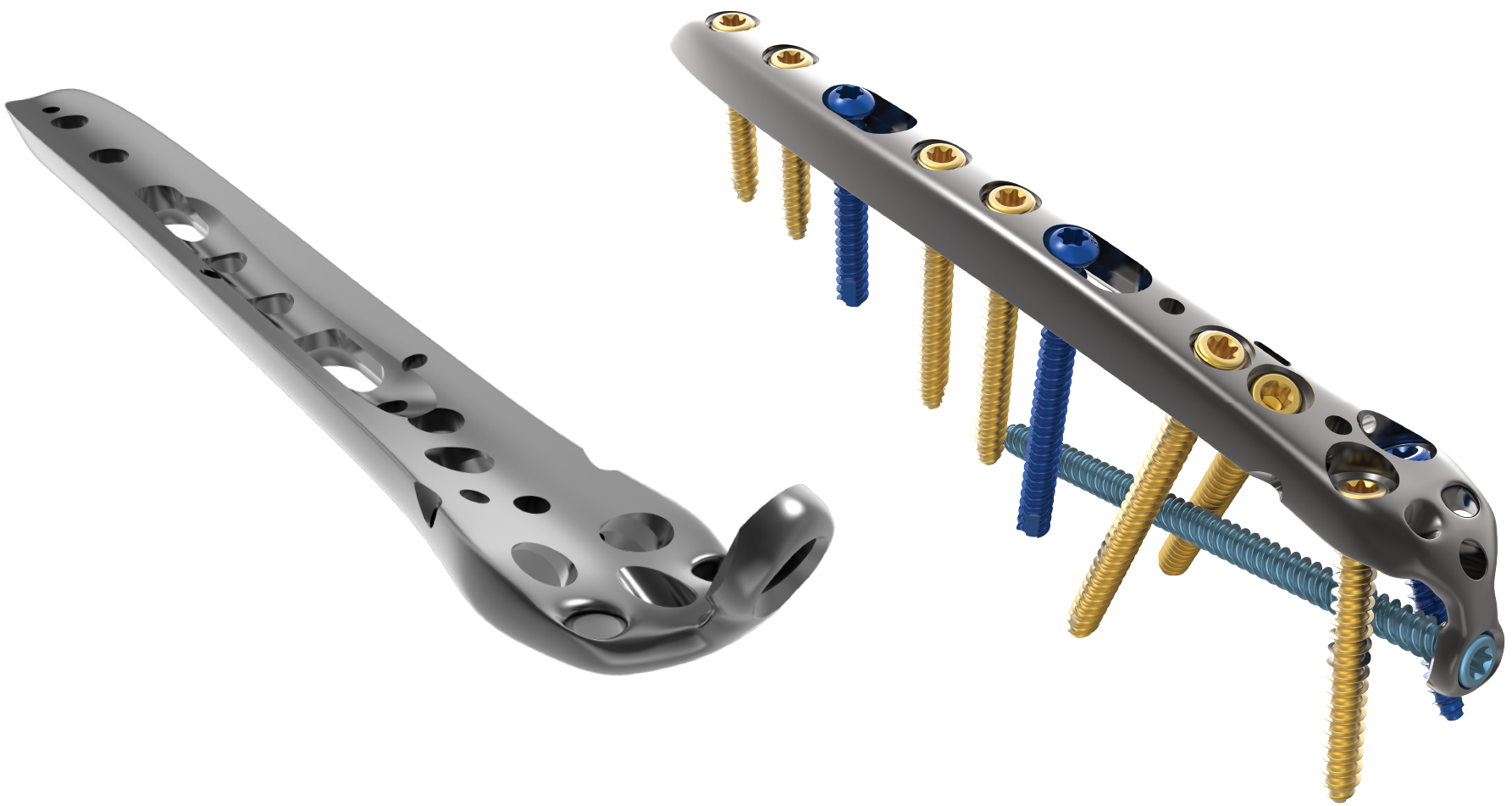
Suture anchor points incorporate triceps for added stability
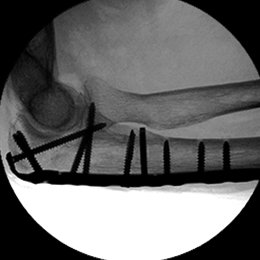
PROXIMAL ULNA PLATE
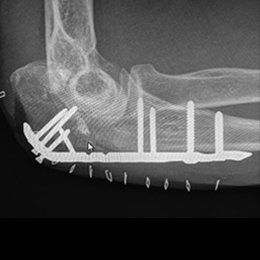
Alternate construct with multiple horizontal proximal screws

Founded in 2007 by Dr Jorge Orbay, MD, Skeletal Dynamics set out to provide innovative, science-based solutions to solve and understand the clinical challenges of upper extremity surgery and unmet clinical needs. Skeletal Dynamics is the only medical device company that is 100% solely focused on the upper extremities. Distributors of Skeletal Dynamics are selected based on individual integrity, industry experience and clinical knowledge and LEDA is proud to be the leading UK orthopaedic distributor for Skeletal Dynamic products including:
Frequently Asked Questions
Ulna fractures typically occur due to elbow trauma injury. The most common example is when a fall onto an outstretched hand causes force to be put on the elbow joint. Due to the bones’ proximity, ulna fractures will sometimes be present alongside distal radius fractures.
A finite element analysis study shows bone strength recovering after 3-6 months, with a full recovery likely after 6 months. However, factors like bone atrophy may influence this timeframe. As such, patients should be told about the risks of refracture.
